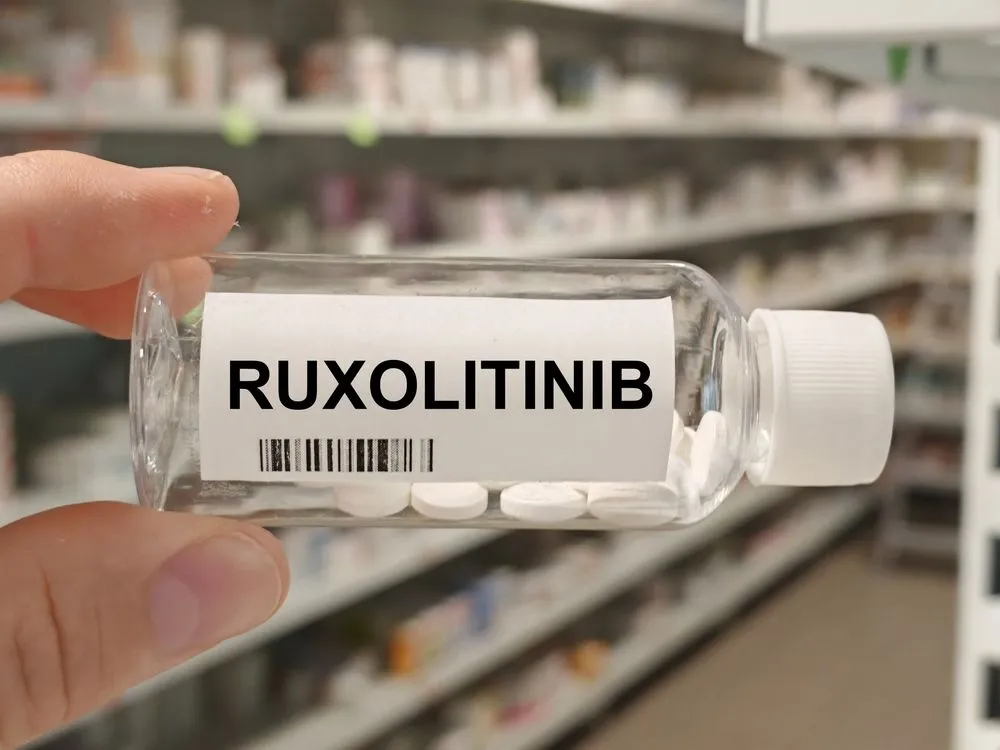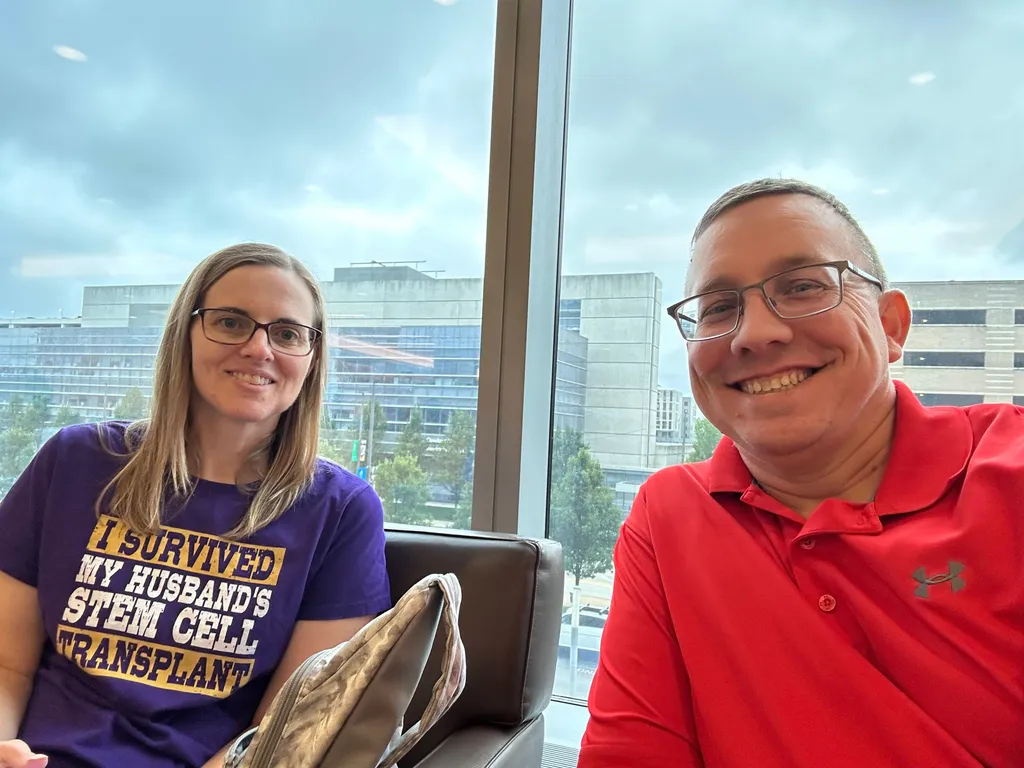The Power of Exercise for Patients with Myelofibrosis

Myelofibrosis (MF) is a myeloproliferative neoplasm (MPN). MPNs are a group of rare blood diseases that occur when the bone marrow produces too many blood cells. In myelofibrosis, the bone marrow is defective and produces abnormal blood cells, which causes scar tissue to form. This prevents the body from producing blood cells normally.
Due to the loss of regular blood cell production, many myelofibrosis patients experience fatigue, depressive episodes, and loss of appetite as side effects of their cancer. These symptoms can make it hard for patients to be motivated to stay active.
Thankfully, research is emerging on the relationship between physical activity and myelofibrosis, along with other MPNs such as essential thrombocythemia, and polycythemia vera, to better understand the benefits and risks of appropriate physical activity for these conditions.
Learn how exercise can positively affect your journey with an MPN by helping improve your quality of life, despite your side effects.
The Relationship Between Physical Activity and Quality of Life
In 2018, 1,807 MPN patients were observed to discover the connection between physical activity and quality of life.
Patients were asked to complete a series of questionnaires about their activity level, symptoms/side effects, and quality of life.
Fatigue was more prevalent in patients with lower levels of physical activity than those with a more active lifestyle. Additionally, patients who reported fatigue as a side effect had a lower quality of life than those who did not experience fatigue.
Finally, patients with a sedentary lifestyle (hardly any physical activity) had a lower quality of life, while those with an active quality of life reported a high quality of life.
Another 2018 study of MPN patients who participated in daily yoga showed small improvements in sleep, mental wellness (such as anxiety and depression), and pain levels. Larger improvements were reported in stress reduction, fatigue improvement, and higher activity levels. This study only included 48 MPN patients, so further investigation is needed to see if these results can be replicated on a larger scale.
Is It Safe to Exercise with Myelofibrosis and other MPNs?
Patients with myelofibrosis and other MPNs may question what level of physical activity is appropriate, given the side effects that patients may experience.
High platelet levels can increase the risk of blood clots, while low platelet levels can increase the risk of severe bleeding.
Exercise should be done with physicians' awareness, and physical activity may not be appropriate during unstable disease (blood clots, low platelets, etc.)
Although the spleen is enlarged, spleen rupture due to physical activity is not considered a risk for MPN patients.
People with MPNs are advised to pace themselves accordingly when exercising. Instead of jumping into physical activity, gradually build up to an appropriate level of exercise that you can handle.
If you are new to exercise, appropriate activities might look like:
- Walking
- Light cardiovascular activity (such as the elliptical)
- Body-weight strength exercises
A gradual build-up might involve walking to the mailbox daily for a week, then walking down the street and advancing to further distances. It could also involve starting with bodyweight exercise and gradually adding weight as you feel fit.
Patients should pace their activities with frequent rest breaks to stabilize energy levels.
To avoid significant injury or bleeding, avoid extreme contact sports such as football and rugby or high-risk falls like mountain biking, snowboarding, or skiing.
Conclusion
Physical activity is possible and encouraged with myelofibrosis or another MPN. It can be a good way to stay mentally healthy and less fatigued. Larger studies are needed to prove a direct correlation between disease improvement and physical activity.
To continue learning about healthy habits, you can watch our patient webinar, "Dietary Guidelines for Cancer Prevention After Treatment" with Registered Dietitian Joan Elizondo.
Sources:
- Associations between fatigue, physical activity, and QoL in patients with myeloproliferative neoplasms - Tolstrup Larsen - 2018 - European Journal of Haematology - Wiley Online Library
- Physical Activity as a Nonpharmacological Symptom Management Approach in Myeloproliferative Neoplasms: Recommendations for Future Research - PMC
- Improving symptom burden and quality of life in patients with myelofibrosis: current strategies and future directions
Myelofibrosis (MF) is a myeloproliferative neoplasm (MPN). MPNs are a group of rare blood diseases that occur when the bone marrow produces too many blood cells. In myelofibrosis, the bone marrow is defective and produces abnormal blood cells, which causes scar tissue to form. This prevents the body from producing blood cells normally.
Due to the loss of regular blood cell production, many myelofibrosis patients experience fatigue, depressive episodes, and loss of appetite as side effects of their cancer. These symptoms can make it hard for patients to be motivated to stay active.
Thankfully, research is emerging on the relationship between physical activity and myelofibrosis, along with other MPNs such as essential thrombocythemia, and polycythemia vera, to better understand the benefits and risks of appropriate physical activity for these conditions.
Learn how exercise can positively affect your journey with an MPN by helping improve your quality of life, despite your side effects.
The Relationship Between Physical Activity and Quality of Life
In 2018, 1,807 MPN patients were observed to discover the connection between physical activity and quality of life.
Patients were asked to complete a series of questionnaires about their activity level, symptoms/side effects, and quality of life.
Fatigue was more prevalent in patients with lower levels of physical activity than those with a more active lifestyle. Additionally, patients who reported fatigue as a side effect had a lower quality of life than those who did not experience fatigue.
Finally, patients with a sedentary lifestyle (hardly any physical activity) had a lower quality of life, while those with an active quality of life reported a high quality of life.
Another 2018 study of MPN patients who participated in daily yoga showed small improvements in sleep, mental wellness (such as anxiety and depression), and pain levels. Larger improvements were reported in stress reduction, fatigue improvement, and higher activity levels. This study only included 48 MPN patients, so further investigation is needed to see if these results can be replicated on a larger scale.
Is It Safe to Exercise with Myelofibrosis and other MPNs?
Patients with myelofibrosis and other MPNs may question what level of physical activity is appropriate, given the side effects that patients may experience.
High platelet levels can increase the risk of blood clots, while low platelet levels can increase the risk of severe bleeding.
Exercise should be done with physicians' awareness, and physical activity may not be appropriate during unstable disease (blood clots, low platelets, etc.)
Although the spleen is enlarged, spleen rupture due to physical activity is not considered a risk for MPN patients.
People with MPNs are advised to pace themselves accordingly when exercising. Instead of jumping into physical activity, gradually build up to an appropriate level of exercise that you can handle.
If you are new to exercise, appropriate activities might look like:
- Walking
- Light cardiovascular activity (such as the elliptical)
- Body-weight strength exercises
A gradual build-up might involve walking to the mailbox daily for a week, then walking down the street and advancing to further distances. It could also involve starting with bodyweight exercise and gradually adding weight as you feel fit.
Patients should pace their activities with frequent rest breaks to stabilize energy levels.
To avoid significant injury or bleeding, avoid extreme contact sports such as football and rugby or high-risk falls like mountain biking, snowboarding, or skiing.
Conclusion
Physical activity is possible and encouraged with myelofibrosis or another MPN. It can be a good way to stay mentally healthy and less fatigued. Larger studies are needed to prove a direct correlation between disease improvement and physical activity.
To continue learning about healthy habits, you can watch our patient webinar, "Dietary Guidelines for Cancer Prevention After Treatment" with Registered Dietitian Joan Elizondo.
Sources:
- Associations between fatigue, physical activity, and QoL in patients with myeloproliferative neoplasms - Tolstrup Larsen - 2018 - European Journal of Haematology - Wiley Online Library
- Physical Activity as a Nonpharmacological Symptom Management Approach in Myeloproliferative Neoplasms: Recommendations for Future Research - PMC
- Improving symptom burden and quality of life in patients with myelofibrosis: current strategies and future directions

about the author
Audrey Burton-Bethke
Audrey is a content writer and editor for the HealthTree Foundation. She originally joined the HealthTree Foundation in 2020. Audrey loves spending time with her supportive husband, energetic four-year-old, and new baby.
More on Navigating Your Health
Trending Articles
Upcoming Events
Get the Latest Myeloproliferative Neoplasm Updates, Delivered to You.
By subscribing to the HealthTree newsletter, you'll receive the latest research, treatment updates, and expert insights to help you navigate your health.
Together we care.
Together we cure.
3x Faster.












